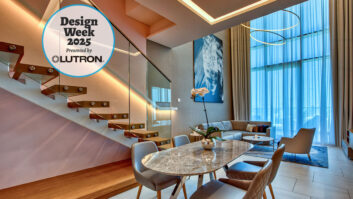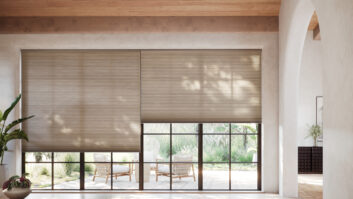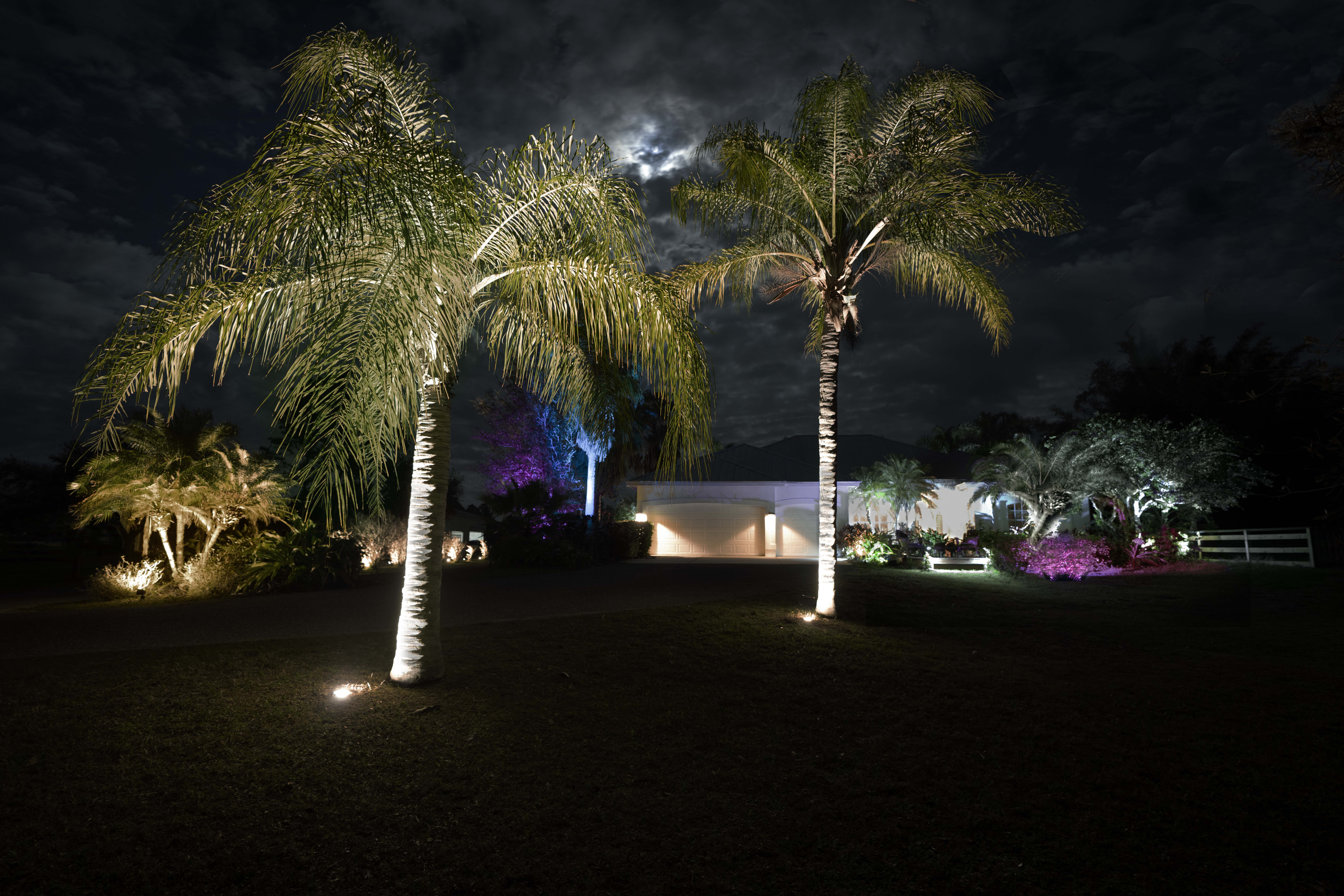Window Shades Control Integration Offers Eco-Friendly And Profitable Answer To Shrinking Margins In The Ci Channel
With the addition of a new Sivoia QED (Quiet Electronic Drive) skylight shade to its family of roller shades, drapery track, and Roman shades, Lutron can provide quiet, precise control of daylight for a complete application.
Unfortunately for the custom installation channel, the types of


With the addition of a new Sivoia QED (Quiet Electronic Drive) skylight shade to its family of roller shades, drapery track, and Roman shades, Lutron can provide quiet, precise control of daylight for a complete application. technologies installed in megamansions around the world are of the power-sucking variety that are frequently at odds with the “green” or “eco-friendly” alternatives put forth as tangible ways out of the global environmental and financial crisis.
One application of technology, however, already has proven to be a profitable green-friendly alternative in commercial buildings and is now making its way into the home. The concept of daylight harvesting combines natural light and window shades with artificial light and lighting control to achieve specific room brightness goals. As natural light is “harvested” and measured by an ambient light sensor, a lighting control and shade system automatically dims the light fixtures and/or adjusts the shades so that the natural and artificial light work together to provide the desired light level in a given room.
With the Department of Energy reporting that homeowners spend, on average, five to 10 percent of their electric bills on lighting (and in some regions that rely heavily on air conditioning it’s as high as 25 percent) residential electronic systems contractors who aren’t already steadily doing shade control have a huge opportunity. Offering shades control technology to customers helps them to save on electricity costs while also making them feel good about being a friend to the environment. And, unlike “commodities” such as flatpanel displays, custom shades control products still offer profit potential for dealers.
DELIVERING THE GOODS
There are many nuances involved with integrating shades control, and it’s not the easiest technology to learn. Nonetheless, manufacturers are introducing new product features, offering more training classes, and providing strong support teams to get integrators more comfortable with selling and installing these products.
Draper Inc., a manufacturer better known for its motorized projection screens and projector lifts, has seen the commercial trend of shade control begin trickling down to the residential market.
“Commercial customers looking to save money, but wanting to keep daylight and views, have driven the shade market for some time,” said Clint Childress,

Thomas Harkness, Somfy’s technical service coordinator, says that his company’s greatest challenge is training integrators on fabrics and the variety of motors and controls for any type of application. green buildings coordinator for Draper. “New motors and controls, which allow easy integration with other building automation, have further helped shades grow. Both of these trends are also important in the residential market.”
“Being eco-friendly and conserving energy have catapulted automated window coverings into the ranks of distributed audio and security, agreed Thomas Harkness, technical service coordinator for Somfy, a Cranberry, New Jersey-based manufacturer of motors and electronic controls for interior and exterior window covering applications. Harkness explained that motorized window coverings help control energy in both cool and warm environments.
“They retain cool air in your home and they provide the same benefit in cooler climates by reducing heat loss and helping to maintain a comfortable interior temperature, no matter where you live,” he said.
In other words, savvy homeowners can program shades to lower or rise at certain times of the day to help manage the heat gain in the summer and heat loss during the winter, reducing energy consumption and costs.
Somfy recently enhanced its product line with an IP interface, a serial device with a built-in Web-based server used to connect a variety of Somfy motors and control devices to an IP network, enabling the ability to configure and control automated window coverings powered by Somfy from any standard Web browser. A Z-Wave interface to control the company’s AC- and DCpowered intelligent motors will be introduced this year. Somfy also has developed a new 16-channel Universal Radio Technology Somfy (RTS) interface that has an auto-detect port for utilizing serial commands (RS-232 or RS- 485), a RS-485 port, and an IR port for working in conjunction with universal remote control companies.
Jon Sienkiewicz, director of marketing for Universal Remote Control, explained that his company’s RF remotes are designed to control shades because “controlling lighting” now means more to the custom integrator and the end user than simply “controlling electric lights.”
“Because today’s lighting designers rely on natural sunlight for primary daytime illumination, properly programmed lighting scenes shift seamlessly from natural ambient light to artificial electric light as the day progresses,” he said. “There’s nothing more comfortable than a family room bathed in sunlight, but when a home theater is involved, it’s equally important to make the room dark…immediately. Shades control is often just as important as AV control, because both are just as integral to the complete home theater experience.”
Crestron is also committed to making integration of shade control easier by adding products of its shade manufacturer partners, such as Hunter Douglas, into the Crestron software. “Crestron D3 Pro Lighting Design software and SystemBuilder software enable integrators to use Windows-based drag and drop programs to design and program systems,” said Jeff Singer, marketing communications director for Crestron.
GORILLA IN THE ROOM
According to Anson Fogel, COO/CTO of Electronics Systems Consultants, based in Aspen, Colorado, Lutron Electronics Co. Inc. is the 500-pound gorilla in the industry. “It’s the only one that has a substantial shading business as part of its operation with experience and specifications options and information,” he said. “You buy the shades from Lutron, the


Somfy recently enhanced its product lineup with an IP interface, a serial device with a built-in Web-based server used to connect a variety of Somfy motors and control devices to an IP network. The company also has introduced a new 16-channel Universal Radio Technology Somfy (RTS) interface that has an auto-detect port for utilizing serial commands (RS-232 or RS-485). integrator makes money on them, and they’re an integral part of their control system.”
Lutron, based in Coopersburg, Pennsylvania, continues to make its lighting control and shades products more environmentally efficient. For example, the company’s Homeworks System features a “green button” for instant light and shade tuning to reduce energy consumption in the entire home. An enhanced vacation mode provides a lived-in look while reducing the level of light and energy consumed during extended absences.
“The increased awareness of energy, green, and sustainability are working in concert to amplify the value of lighting and shades control systems,” said David M. Weinstein, sales vice president for Lutron global window systems.
Fogel attributes much of Lutron’s success to its designer-friendly fabric options. “Lutron’s fabric solutions are huge, they can do any type of fabric and fabric choices are a big issue for people,” he said.
Lutron recently added a new family of designer fabrics with new textures and colors. “Many fabrics are now PVC-free and eliminate ‘off-gassing,’ or new car smell, and other fabrics like our Infinity series are 100 percent recyclable,” Weinstein said.
Additionally, Lutron has expanded its drapery track offering to include higher capacity systems that control pinch pleat, or ripple fold draperies, in capacities of up to 175 pounds. The company also has added manual open carrier features to allow a user to manually open the drapes and curtains in case of a power failure or in case someone doesn’t know that it is controllable. Another new introduction is a skylight tension shade system, available in solar, privacy, and blackout options. It offers the same

Lutron recently added a new family of designer fabrics with new textures and colors. Sivoia QED ultra-quiet and precise shade movement for horizontal skylight applications from zero to 45- degree installation angles. They can be purchased in pre-assembled or field assembly options.
THE CHALLENGES
Fogel pointed out that installation of window coverings is not as easy as it would seem. “If it’s a high-end home, you’re not going to just want to stick it on a wall,” he said. “They’re almost always concealed in a pocket and that has to be done when you frame the house. We work with the architect through a shop drawing process, and you also have to wire for them — it’s not a product that’s easy to retrofit.”
Manufacturers are well aware of this challenge and are all looking to make shades control easier on their dealers and integrators. “Shade installations are like fingerprints; no two are the same,” said Draper’s Childress. His company is offering its dealers education and online documentation to help make their jobs easier.
Schneider Electric provides training based on exercises using different scenarios to guide the installer to the right product. The French company offers a comprehensive range of products and services for the residential, buildings, industry, and energy and infrastructure markets. “We manufacture several types of light level sensors in different shapes and sizes with a variety of ranges,” said Dan Loncar, areas sales manager for Schneider Electric. “How is an installer to remember which is the correct one to use in their specific installation?”
Through its partnerships with Somfy and Hunter Douglas, Crestron is helping its dealers stay ahead of the curve. “The hardest part about shades is installing the actual shade,” Singer said. Crestron offers free training courses in 40 locations worldwide, including 12 in the U.S. Singer said Crestron is committed to investing in more training, opening additional regional offices, hiring more full-time certified trainers, providing more courses and developing online training.
According to Harkness, Somfy’s greatest challenge is training integrators on fabrics (even though Somfy doesn’t manufacture fabrics) and the variety of motors and controls for any type of application. Through Somfy’s System Integration Course, usually held at a fabricator’s facility, Somfy integrators, and those who want to add Somfy to their line, learn about motors and controls from Somfy and styles of window treatments and fabrics from the fabricator. Somfy has also partnered with CEDIA to hold CEU-accredited classes on the subject.
Lutron is working closely with its dealers to ensure that everyone on its team is well-versed on lighting and shade control from a sales, design, installation, programming, and service perspective. “We’re working with our dealers to communicate the evolving and growing business case for total lighting and shade control systems as a path to continued growth and revenue in the residential market,” Weinstein said.
The company’s training programs, experience centers, and annual market development programs are designed to help Lutron and its partners achieve success. “We must all focus on relationship building, joint planning, and a commitment to execute mutually agreeable growth plans, in spite of the challenges the economy is throwing at us,” Weinstein said. “Lighting and shade control is still a vastly under-penetrated market.”
Karen Sussman is a freelance writer in Carmel, Indiana.







